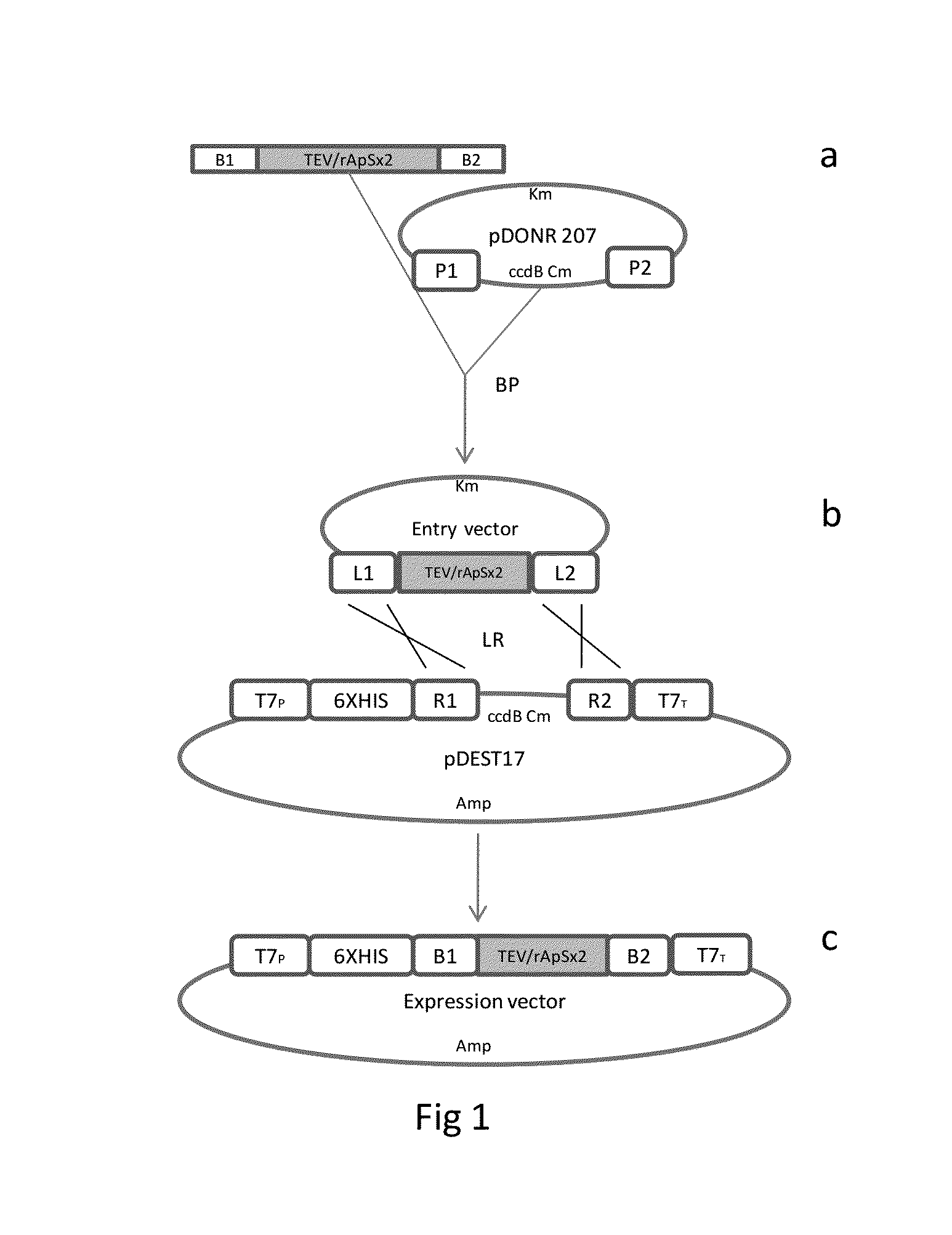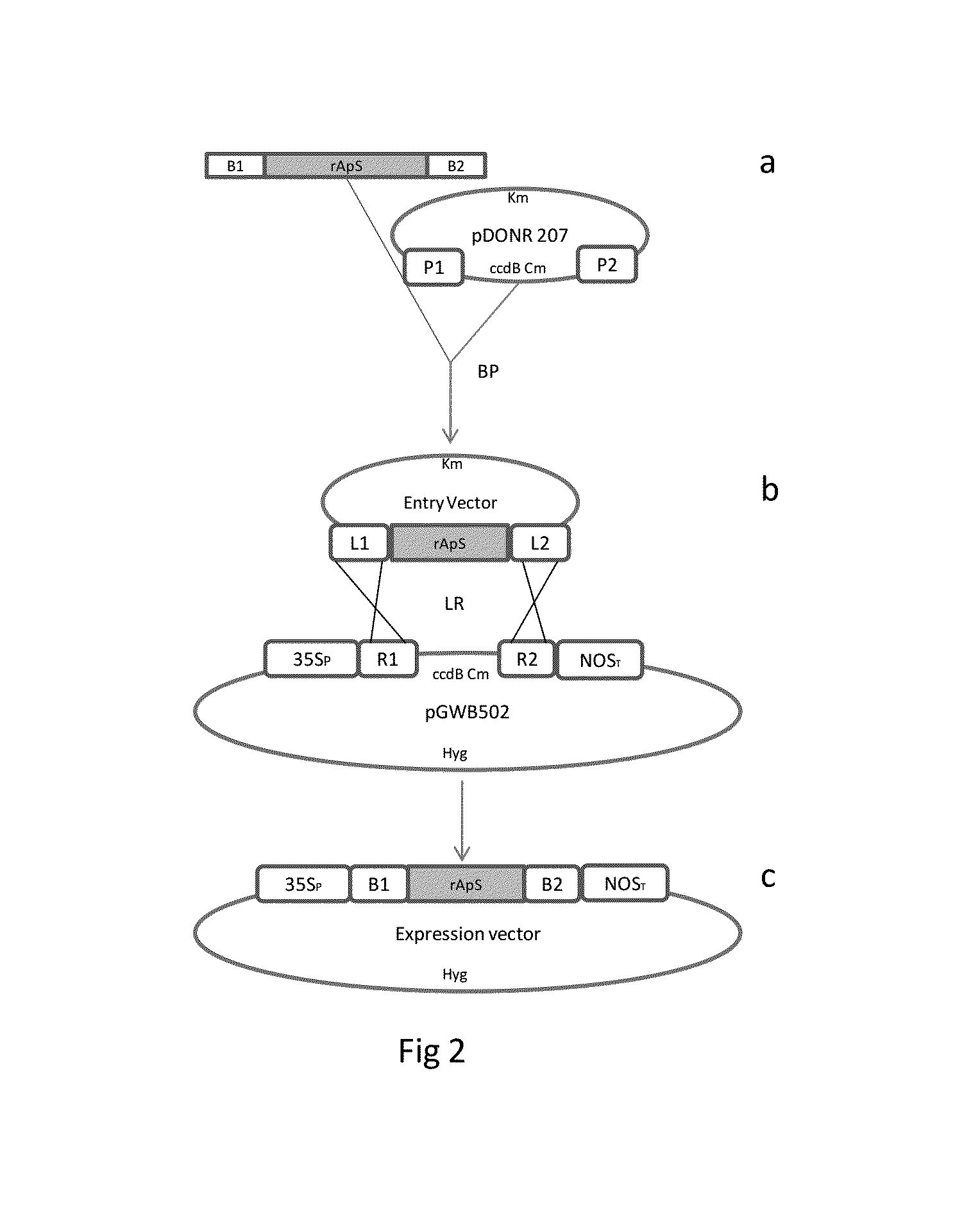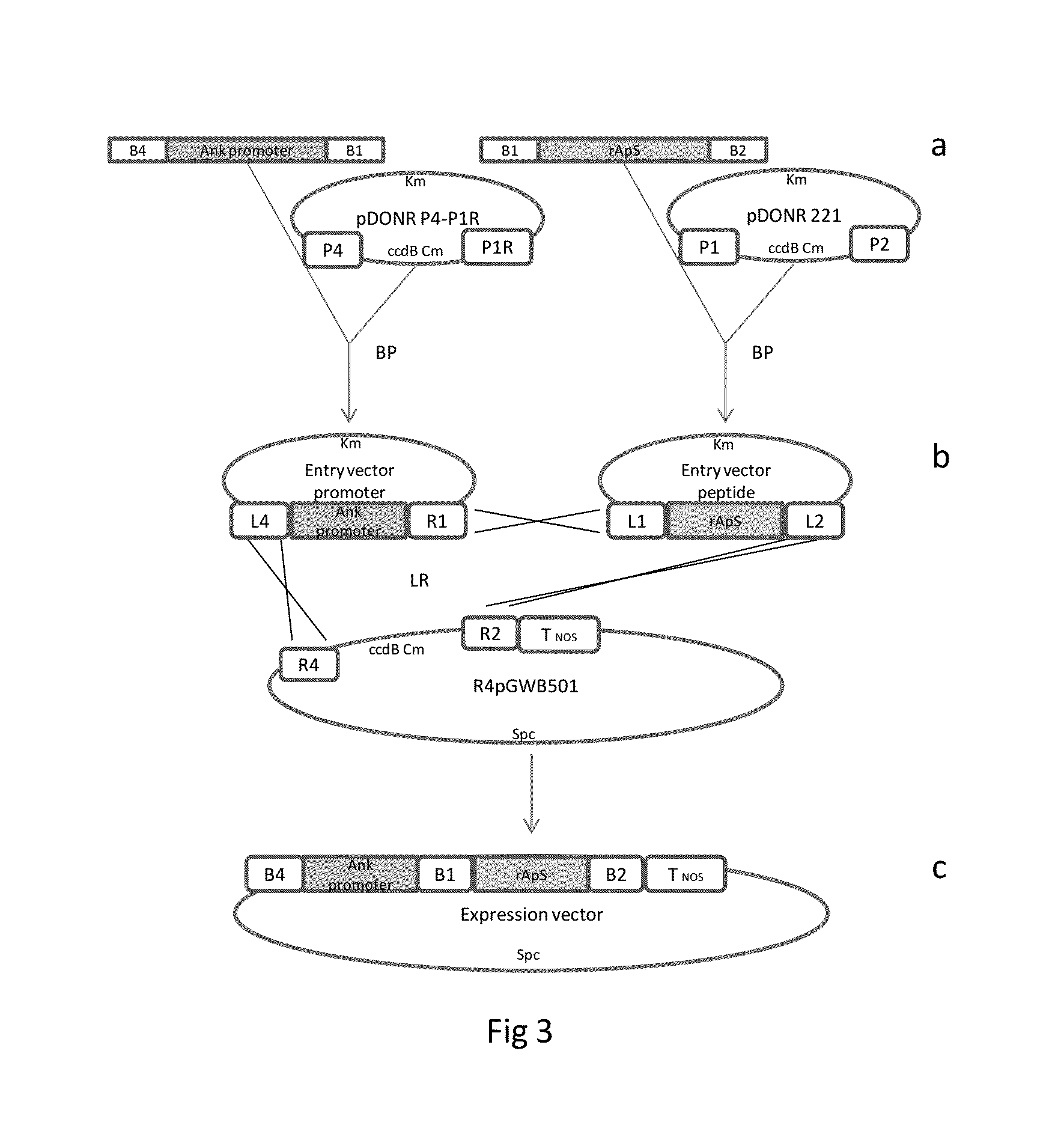Chimeric gene for heterologous expression which encodes for peptides with antimicrobial activity
a technology of chimeric gene and heterologous expression, which is applied in the direction of peptides, peptide sources, animals/human peptides, etc., can solve the problems of low recovery obtained after tissue extraction, difficulties in using peptides as alternative drugs,
- Summary
- Abstract
- Description
- Claims
- Application Information
AI Technical Summary
Benefits of technology
Problems solved by technology
Method used
Image
Examples
example 1
[0018]Design of the Synthetic Gene: The Ap-S cDNA was designed using the reverse-translation of the sequence of 31 amino acids (MPVGIVIAPKKSPFTAKKPGPVLSGVKAGPG) (SEQ ID No. 9) previously described based on Argopecten purpuratus hemocytes. Using GCUA software (Fuhrmann et al., 2004) and codons from E. coli and N. tabacum, a synthetic gene for rAp-S (SEQ ID No. 1) was obtained. A recognition site for the TEV-protease in the 5′ end was added. Two full oligonucleotide sequences, TEV / rAp-S and TEV / rAp-Sx2 [TEV / rAp-S::TEV / rAp-S] were synthetized at Integrated DNA Technologies, Inc. (Iowa, U.S.A.) and cloned into a pSMART vector (Lucigen, Middletown, Wis.), generating the vectors pSMART-TEV / rAp-S and pSMART-TEV / rAp-Sx2 (FIG. 1).
example 2
[0019]Generation of the Donor-gene Vector for Expression in E. coli: Using pSMART-TEV / rAp-S and pSMART-TEV / rAp-Sx2 as templates, additional attB recombination sequences were flanked at TEV / rAp-S and TEV / rAp-Sx2 ends using a double PCR amplification strategy. In the first step (pre-amplification), adapter-primers adpF (SEQ ID No. 2) and apdR (SEQ ID No. 3) were used to amplify a fragment of 147 bps [adpF::TEV / rAp-S::adpR] and 261 bps [adpF::TEV / rAp-Sx2::adpR]. The PCR reaction was performed in a total volume of 50 μL containing 5 μL of Accuprime Pfx reaction mix 10 times. (Invitrogen, Carlsbad, Calif.), 1 μL of each primer (10 mM), 0.5 μL AccuPrime Pfx DNA polymerase (2.5 U / μL; Invitrogen), 0.5 μL of pSMART-TEV / rAp-S (1:100 diluted) and pSMART-TEV / rAp-Sx2 (1:100 diluted) and 42 μL of H2O for each reaction. The thermal profile was a starting denaturation step at 95° C. for 2 min followed by 10 cycles of 94° C. for 15 s, 55° C. for 30 s and 68° C. for 135 s. A second round of PCR was p...
example 3
[0021]Expression and purification of AMP in E. coli BL21 (DE3): A strain of E. coli BL21 was inoculated into 5 mL of LB medium containing 100 mg / L carbenicillin and grown overnight at 37° C. under agitation at 180 rpm. Then the 5 mL were used as inoculum for 100 mL of LB medium and grown for 3 h, with the same concentration of antibiotic and growth described conditions. After this period, the culture medium was supplemented with isopropyl-b-D-thio-galactopyranoside (IPTG) 1 mM for induction of protein.
[0022]Cultivation was continued for 3 more hours and finally centrifuged at 5000 rpm for 10 min to form a pellet of bacteria and the supernatant was carefully removed. The pellet was mixed by vortexing and pipetting the solution B-PER (Thermo Scientific) in a ratio of 4 mL of B-PER per gram of pellet, adding 2 μL of Lysozyme (Thermo Scientific) and 2 mL of DNase I (Thermo Scientific) per mL of B-pER used. The mixture was incubated under constant stirring for 15 min. Then the lysate was...
PUM
| Property | Measurement | Unit |
|---|---|---|
| Mass | aaaaa | aaaaa |
| Fraction | aaaaa | aaaaa |
| Angle | aaaaa | aaaaa |
Abstract
Description
Claims
Application Information
 Login to View More
Login to View More - R&D
- Intellectual Property
- Life Sciences
- Materials
- Tech Scout
- Unparalleled Data Quality
- Higher Quality Content
- 60% Fewer Hallucinations
Browse by: Latest US Patents, China's latest patents, Technical Efficacy Thesaurus, Application Domain, Technology Topic, Popular Technical Reports.
© 2025 PatSnap. All rights reserved.Legal|Privacy policy|Modern Slavery Act Transparency Statement|Sitemap|About US| Contact US: help@patsnap.com



